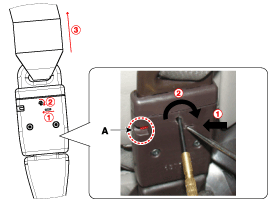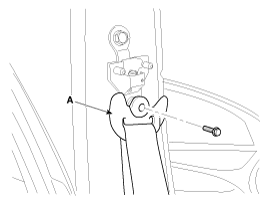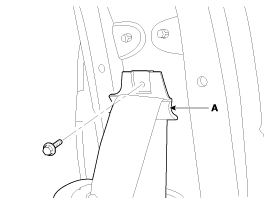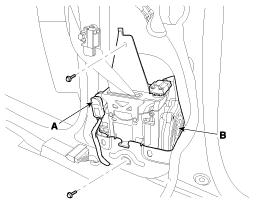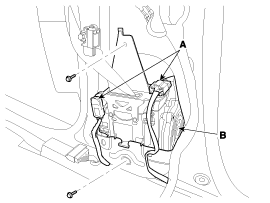Hyundai Genesis: Front Seat Belt / Front Seat Belt Retractor Repair procedures
Hyundai Genesis (DH) 2013-2016 Service Manual / Body (Interior and Exterior) / Front Seat Belt / Front Seat Belt Retractor Repair procedures
| Replacement |
|
| 1. |
Remove the front anchor seat belt (A).
|
| 2. |
Remove the center pillar lower trim.
(Refer to Interior Trim - "Center Pillar Trim") |
| 3. |
Remove the center pillar upper trim.
(Refer to Interior Trim - "Center Pillar Trim") |
| 4. |
After loosening the front belt upper anchor mounting bolt, remove the front belt upper anchor (A).
|
| 5. |
After loosening the mounting bolts, remove the front belt center bracket (A).
|
| 6. |
After disconnecting the connector (A), loosen the mounting bolts and remove the front belt retractor (B).
[Genral Type]
[Option Type]
|
| 7. |
Install in the reverse order of removal.
|
 Front Seat Belt Retractor Components and Components Location
Front Seat Belt Retractor Components and Components Location
Component Location
1. Front seat belt retractor
...
 Height Adjust Components and Components Location
Height Adjust Components and Components Location
Component Location
1. Height adjust
...
Other information:
Hyundai Genesis (DH) 2013-2016 Owners Manual: Front seats
WARNING Take the following precautions when adjusting your seat: NEVER attempt to adjust the seat while the vehicle is moving. The seat could respond with unexpected movement and may cause loss of vehicle control resulting in an accident. Do not place anything under the fr ...
Hyundai Genesis (DH) 2013-2016 Service Manual: Repair procedures
The initialization and learning value saving All initialization and setting of PTM cannot be done by the diagnosis tool (GDS). They must be manipulated manually. The initialization and learning value saving are the works to reduce the variations of the parts comprising ...
© 2013-2025 www.hgenesisdh.com


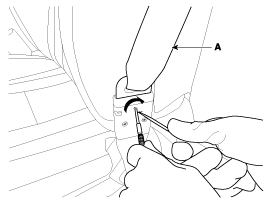

 ) and turn it clockwise.
) and turn it clockwise. ).
).